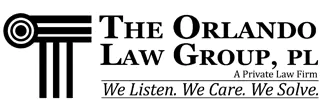The Payment Protection Program underwent changes on June 16, 2020. With these changes brings more flexibility and potential uses for borrowers. We at the Orlando Law Group want to keep you up to date with the assistance that is being provided, and below, you will find some valuable points that you need to know about the new PPP loan forgiveness application terms. If the Paycheck Protection Program has changed, we need to stay up to date and apprised to the situation. Below, you will find updates that
Extending the coverage period of the paycheck protection program
Starting off, borrowers may choose either an 8 week or 24 week coverage period where they can spend their PPP funds.
When they opt for the 8-week stipend, the maximum compensation amount is $15,385 for non-owner employees. For the 24-week stipend, the maximum compensation amount is $46,154.
Employees who are business owners, general partners, and self-employed individuals get a maximum compensation amount of $15,385 and $20,833 for the 8 and 24 week coverage period, respectively.
It’s up to the borrower which coverage period they think is best (8 or 24 weeks). At first glance, it may seem that the compensation period of 24 weeks is better as it gives the employees more time to use their PPP funds; however, the employer must maintain his or her employment levels as stated in the pre-COVID 19 references for the same length of time.
Borrowers may decide to apply for the PPP loan on the following periods- January 1, 2020, to February 29, 2020, or February 15, 2019, to June 30, 2019. The period that has a lower employee number can be more advantageous for employers.
Full-time equivalency or FTE calculation will be used to determine employment levels.
Which coverage period makes the most sense?
In the same vein, employers must take measures and refrain from reducing compensation to more than 25 percent of earnings in their most recent employment quarter, usually January 1 to March 31, 2020.
If a business remained operational and he or she has paid their employees recently, then the 8 week coverage period would make more sense to utilize as they would not need to reduce their employees’ salaries or fire them in the future. On the other hand, if a business was closed and the employer did not pay its employees recently but intends to open after the restrictions are lifted, then it makes more sense to choose the 24-week coverage.
It’s important to note that the major factor in determining forgiveness is average FTE or full-time equivalency. Borrowers can compute this by adding up all weekly paid hours and dividing that by forty and rounding it up to the nearest tenth. The ceiling per employee must not exceed 40 hours.
an alternative way to compute Full-time equivalency
An alternative way to compute for FTE is by assigning a value of 1 for employees who work 40 hours a week, while employees who work less than 40 hours per week are assigned a value of .5
Borrowers may use similar methods when calculating full-time equivalency in qualified reference periods and when comparing numbers in the coverage period.
Take note that there are safe harbors in place which can reduce FTE without affecting PPP loan forgiveness. An example of where it can be applied is when an employer is unable to rehire employees for valid reasons.
designing the paycheck protection program to be flexible
The Payment Protection Program is designed to be flexible and can accommodate different employment factors and situations. Computing for PPP forgiveness can either be simple to extremely complex depending on your business’ circumstances.
As the economy shifts, so will the rules behind these programs that are aiding individuals and businesses that have gone through strife. We want to make sure that you have the most up to date answers and will be monitoring the situation to see what the future brings. It is important to note that if you have questions about the intricacies of these forgiveness programs, do not hesitate to reach out to us at The Orlando Law Group. We are truly here to listen, to care, and to solve.
If you have questions regarding what is happening regarding
Last Updated on June 26, 2020 by The Orlando Law Group








